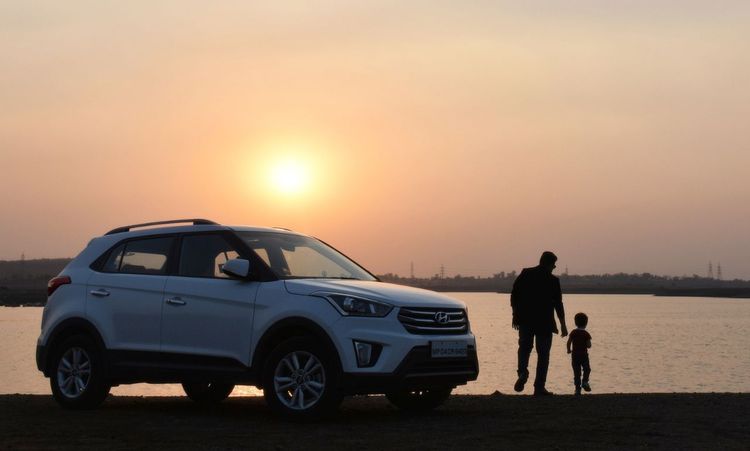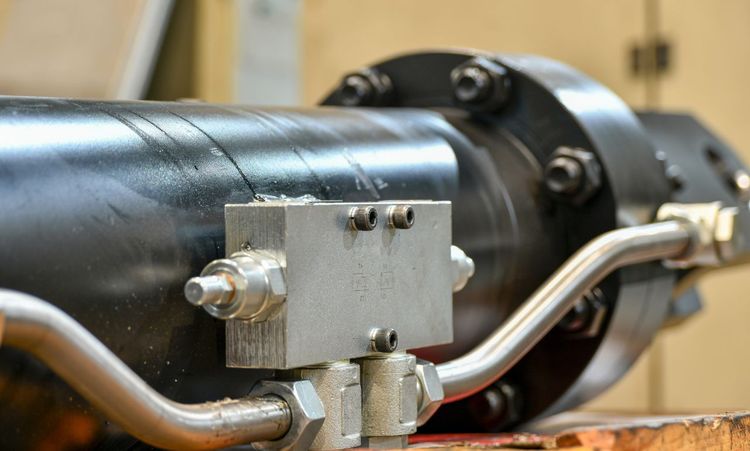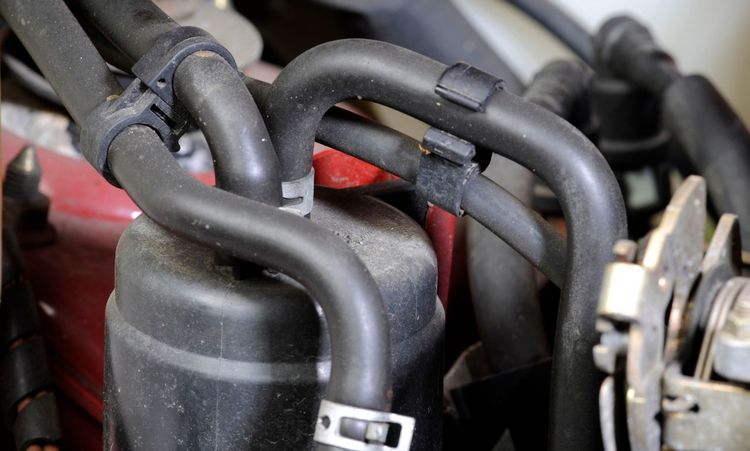Finding the perfect family car feels like solving a complex puzzle, doesn't it? You're juggling safety ratings, boot space, fuel economy, and trying to keep everyone happy - from the teenager who wants something "cool" to your partner who insists on practicality. Here's the thing: the best family cars aren't just about getting from point A to point B anymore.
Today's family car market offers an incredible range of options that would make your head spin. We're talking about vehicles that can haul sports equipment, handle school runs with ease, and still look good in your driveway. This article breaks down everything you need to know about choosing family cars that actually work for real families.
From fuel-efficient hybrids to spacious SUVs, electric vehicles to budget-friendly options, we'll explore what makes a car truly family-friendly. You'll discover why some families swear by estate cars while others can't live without their MPVs. Most importantly, you'll learn how to match your specific needs with the right vehicle.
Fuel Efficiency
Let's talk money - because fuel costs hit family budgets hard. Smart families know that fuel efficiency isn't just about being environmentally conscious; it's about stretching every dollar further. Modern family cars deliver impressive fuel economy without sacrificing the space and comfort your family needs.
Hybrid models have revolutionized fuel efficiency in the family car segment. Take the Toyota Prius, which consistently delivers over 50 MPG in real-world driving conditions. That translates to serious savings when you're doing multiple school runs, weekend trips to soccer practice, and family vacations.
But here's what most people don't realize: fuel efficiency varies dramatically based on your driving patterns. City driving with stop-and-go traffic eats fuel faster than highway cruising. Families doing mostly urban driving benefit more from hybrid technology, while those covering long distances might find diesel engines more economical.
The weight factor plays a crucial role too. Heavier vehicles naturally consume more fuel, which is why manufacturers focus on lightweight materials without compromising safety. Modern family cars use advanced engineering to maximize fuel economy while maintaining the structural integrity families need.
Versatility
Versatility separates good family cars from great ones. Your ideal family car adapts to soccer practice on Tuesday, grocery shopping on Wednesday, and weekend camping trips without missing a beat. This flexibility comes from thoughtful design choices that prioritize real-world usability.
Consider cargo space - not just boot space, but how that space works for your family. Flat loading floors make hauling sports equipment easier. Split-folding rear seats let you carry long items while still seating passengers. Some families need maximum passenger space, while others prioritize cargo capacity.
Interior flexibility matters just as much. Adjustable seating configurations, multiple cup holders, storage compartments for tablets and chargers - these details make daily life smoother. Families with growing children especially appreciate seats that adjust as kids get taller.
Weather protection features add another layer of versatility. All-wheel drive handles snowy school runs. Higher ground clearance helps with rough parking lots at sports complexes. Roof racks expand carrying capacity for bikes, ski equipment, or extra luggage during family trips.
Traditional Combustion vs. Electric
The combustion versus electric debate hits differently when you're shopping for family cars. Traditional engines offer familiarity, established service networks, and proven reliability. Electric vehicles promise lower operating costs and environmental benefits, but come with charging considerations.
Combustion engines still excel for families covering long distances regularly. Gas stations are everywhere, refueling takes minutes, and range anxiety doesn't exist. Maintenance schedules are predictable, and mechanics understand these powertrains inside and out.
Electric vehicles shine for families with predictable daily routines. School runs, commuting, and local errands fit perfectly within most EVs' range capabilities. Home charging means starting each day with a "full tank," and electricity costs significantly less than gasoline per mile.
Range anxiety affects families differently than individual drivers. Running out of charge with kids in the car creates stress that single drivers might tolerate better. However, most families drive less than 40 miles daily - well within any modern EV's capabilities.
Hyundai Tucson

The Hyundai Tucson represents everything modern families want in a compact SUV. Its bold styling catches attention without being flashy, while the interior offers genuine practicality for families of four or five. Real-world testing shows why this SUV consistently ranks among family favorites.
Boot space measures 38.7 cubic feet with rear seats up - enough for weekly grocery runs and sports equipment. Fold those rear seats down, and you get 74.8 cubic feet of cargo space. That's weekend camping trip territory right there.
Safety technology in the Tucson impresses even the most cautious parents. Standard forward collision avoidance, blind-spot monitoring, and rear cross-traffic alert create a protective bubble around your family. The Insurance Institute for Highway Safety awarded it Top Safety Pick status.
Fuel economy hits the sweet spot for family budgets. The base engine delivers an EPA-estimated 26 mpg city and 33 mpg highway. Hybrid variants push those numbers even higher, reaching 38 mpg in city driving where families spend most of their time.
Kia EV3
Electric family cars need to prove themselves twice as hard as traditional vehicles, and the Kia EV3 meets that challenge head-on. This compact electric SUV delivers the space families need with the efficiency modern parents want.
Battery range extends beyond 300 miles in optimal conditions, eliminating range anxiety for most family driving patterns. School runs, after-school activities, and weekend errands easily fit within the daily range budget. Home charging means never stopping for fuel during busy school weeks.
Interior space maximization showcases electric vehicle advantages. Without a traditional engine taking up space, designers created a roomier cabin than comparable gas-powered SUVs. Rear seat legroom impresses even tall teenagers, while cargo space handles family gear with ease.
Charging speed matters for family life. DC fast charging adds 200 miles of range in about 30 minutes - perfect for longer family trips. Level 2 home charging replenishes the battery overnight, ensuring readiness for the next day's activities.
Hatchbacks vs. Estates
Size matters when choosing between hatchbacks and estates, but bigger isn't always better for every family. Hatchbacks offer urban maneuverability and parking ease, while estates provide maximum cargo space and passenger comfort. Your family's specific needs determine the right choice.
Hatchbacks excel in city environments where parking spaces feel designed for toy cars. Their shorter length makes parallel parking less stressful, and narrow streets don't intimidate. Fuel economy often beats estate variants, saving money at the pump.
Estate cars dominate when cargo space becomes non-negotiable. Weekly grocery shopping for larger families, sports equipment transport, and vacation luggage all favor estate configurations. Rear passenger space typically exceeds hatchback offerings too.
Consider your daily driving reality. Urban families benefit from hatchback agility, while suburban families with longer commutes and more cargo needs often prefer estates. Some manufacturers offer both configurations of the same model, letting you choose based on priorities.
SUVs and MPVs

SUVs and MPVs represent the extremes of family vehicle philosophy. SUVs prioritize style, capability, and all-weather confidence. MPVs focus purely on family functionality, maximizing interior space and passenger comfort above all else.
Modern SUVs blend car-like driving dynamics with truck-based capability. Higher seating positions improve visibility in traffic, while all-wheel drive systems handle weather challenges. Cargo space often matches or exceeds estate cars, but with added ground clearance for rough parking lots.
MPVs remain the ultimate family haulers. Three rows of seating accommodate extended families or carpools. Sliding doors make loading kids easier in tight parking spaces. Interior flexibility adapts to changing family needs as children grow.
Fuel economy traditionally favored MPVs over SUVs, but modern SUV engineering has closed that gap significantly. Both categories now offer hybrid powertrains that deliver impressive efficiency without sacrificing family functionality.
Advanced Safety Features
Family car safety extends far beyond airbags and seat belts. Modern safety technology actively prevents accidents while protecting occupants when crashes occur. Understanding these systems helps families choose vehicles that truly prioritize protection.
Automatic emergency braking systems scan the road ahead constantly. When they detect potential collisions, they alert drivers and apply brakes if necessary. This technology prevents countless rear-end collisions during busy school pickup lines.
Blind-spot monitoring helps parents juggle multiple distractions while driving safely. Lane-keeping assistance prevents dangerous drifting when attention wavers during long family trips. These systems don't replace attentive driving but provide crucial backup when needed most.
Child safety features deserve special attention in family cars. ISOFIX anchor points secure car seats properly. Rear door child locks prevent escape artists from opening doors while driving. Some vehicles even monitor rear seats to prevent accidentally leaving children behind.
Electric Family Cars
Electric family cars have moved beyond early adopter territory into mainstream consideration. Range capabilities now handle real family driving patterns, while charging infrastructure continues expanding rapidly. Cost savings over time often offset higher purchase prices.
Home charging transforms the family vehicle experience. Plugging in overnight means starting each day with maximum range. No more gas station stops with impatient kids in the car. Electricity costs roughly half as much as gasoline per mile driven.
Maintenance requirements drop dramatically with electric powertrains. No oil changes, spark plugs, or transmission services. Brake pads last longer thanks to regenerative braking. These savings add up significantly over family car ownership periods.
Performance surprises many families switching to electric. Instant torque delivery makes merging onto highways effortless. Quiet operation reduces cabin noise, making conversations easier during family drives. Lower center of gravity improves handling and stability.
Budget-Friendly Choices
Family car shopping on a budget requires smart compromising without sacrificing safety or essential features. Reliable used vehicles often provide better value than entry-level new cars. Certified pre-owned programs offer warranty protection with significant savings.
Compact cars stretch budgets furthest while still accommodating small families. Models like the Honda Civic or Toyota Corolla deliver excellent fuel economy, proven reliability, and adequate space for couples with young children. Safety ratings remain high despite lower prices.
Consider total ownership costs beyond purchase price. Reliable brands might cost more initially but save money through lower maintenance costs and better resale values. Fuel-efficient vehicles reduce monthly expenses significantly for families doing lots of driving.
Financing options vary widely between manufacturers and dealers. Low-interest factory financing sometimes beats bank loans. Lease options reduce monthly payments but limit mileage and require excellent credit. Cash purchases eliminate interest charges entirely.
Luxury Family Cars

Luxury family cars combine premium comfort with family practicality, justifying higher prices through superior materials, advanced technology, and enhanced safety features. These vehicles make every family trip feel special while maintaining everyday usability.
Mercedes E-Class Estate exemplifies luxury family transportation. Handcrafted interior materials create a premium environment for daily commutes and family vacations alike. Advanced safety systems exceed standard requirements, providing extra protection for precious cargo.
Technology integration reaches impressive levels in luxury family cars. Rear-seat entertainment systems keep children occupied during long trips. Climate control zones let family members set individual preferences. Premium sound systems make every drive enjoyable.
Resale values typically remain stronger for luxury family cars, offsetting some of the initial price premium. These vehicles often include longer warranties and superior customer service experiences that add value beyond basic transportation.
Conclusion
Choosing the best family car requires balancing competing priorities while staying within budget constraints. Safety remains non-negotiable, but space needs, fuel efficiency, and family lifestyle preferences all influence the final decision. Modern family cars offer impressive capability across all categories.
Electric vehicles continue gaining family acceptance as range anxiety decreases and charging infrastructure expands. Traditional combustion engines still serve families with unpredictable driving patterns or limited home charging options. Hybrid powertrains split the difference effectively.
The perfect family car matches your specific situation rather than checking every possible box. Urban families prioritize different features than suburban families. Growing families need different space configurations than empty nesters. Honest assessment of your needs leads to better decisions.
Remember that family cars serve multiple roles beyond basic transportation. They're mobile offices during soccer practice, storage units for sports equipment, and safe spaces for family conversations. Choose wisely, and your family car becomes a trusted partner in creating lasting memories.
What size family car do I need?
Family size, cargo requirements, and daily driving patterns determine optimal size. Compact cars work for couples with young children, while larger families typically need SUVs or MPVs.
Are electric family cars reliable?
Modern electric family cars offer excellent reliability with fewer moving parts than combustion engines. Manufacturer warranties typically cover batteries for 8-10 years.
How important is all-wheel drive for families?
All-wheel drive benefits families in snowy climates or those frequently driving on unpaved roads. Most families manage fine with front-wheel drive and good tires.
What's the best fuel type for family cars?
Hybrid powertrains offer the best balance of fuel efficiency and convenience for most families. Pure electric works well for predictable daily routines with home charging.
Should I buy new or used family cars?
Certified pre-owned vehicles often provide the best value, offering warranty protection with significant savings compared to new car prices.




